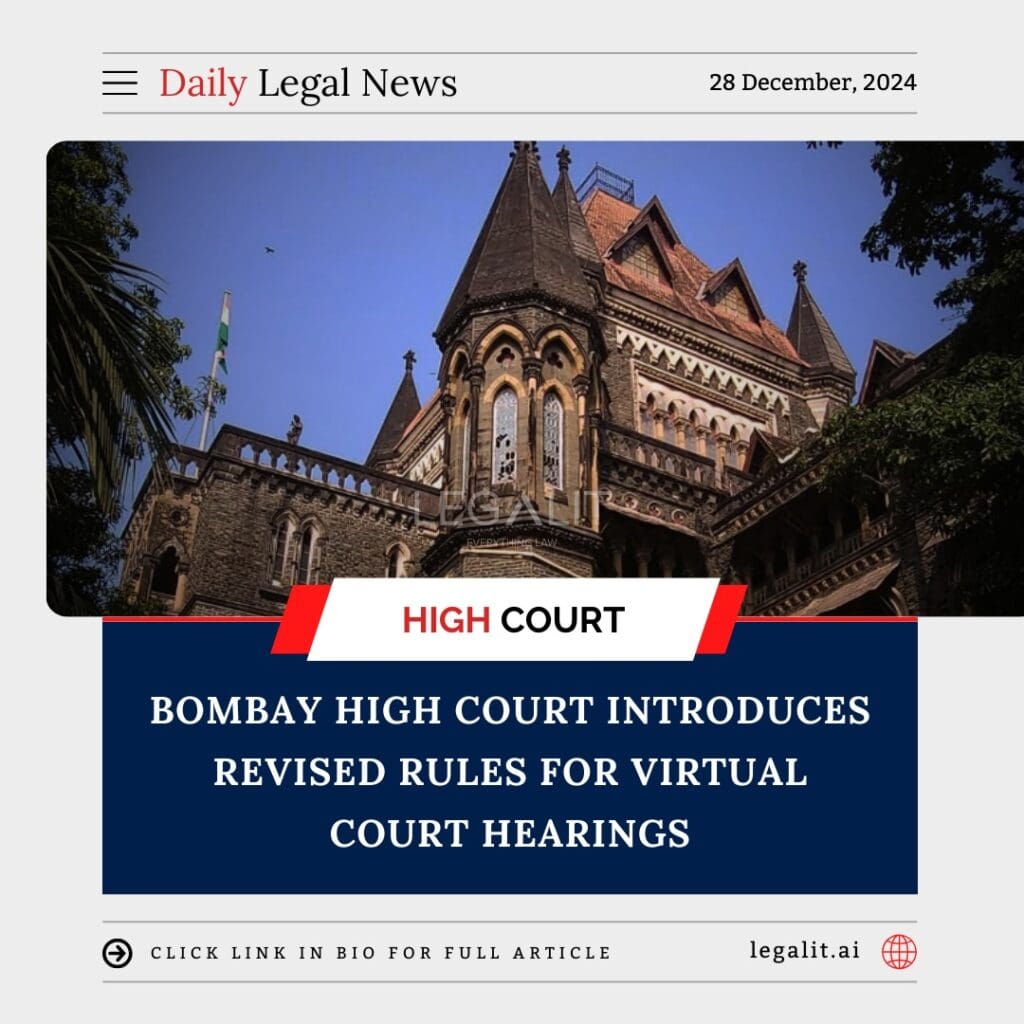
The Bombay High Court has announced updated video conferencing rules aimed at streamlining virtual court proceedings. These revisions are intended to ensure efficient conduct of hearings while maintaining decorum and addressing the challenges posed by remote interactions.
Background
With the increased reliance on virtual court proceedings since the COVID-19 pandemic, the judiciary has faced numerous operational challenges, including technical issues and the need for standardized protocols. The Bombay High Court’s notification seeks to formalize procedures to enhance the effectiveness and reliability of virtual hearings.
Key Highlights of the New Rules
- Advance Scheduling of Hearings:
Virtual hearings must be scheduled in advance, and parties are required to submit necessary documents and inform the court of their intent to participate remotely. - Technical Requirements:
Litigants and lawyers must ensure stable internet connectivity and proper audio-visual equipment. Courts will not be responsible for disruptions caused by inadequate technical arrangements on the participants’ end. - Participant Conduct:
- All participants are required to maintain courtroom decorum, including appropriate attire and behavior.
- The use of virtual backgrounds and recording proceedings without permission is prohibited.
- Access Restrictions:
Only authorized participants, including advocates, litigants, and court staff, may join the virtual hearings. Strict measures will be in place to prevent unauthorized access. - Submission of Evidence:
Documents and evidence must be submitted electronically before the hearing as per court directions, ensuring smooth proceedings. - Privacy and Confidentiality:
Participants must adhere to confidentiality norms, and any breach may result in penalties or contempt proceedings.
Implications
- Enhanced Efficiency: The rules aim to minimize technical and procedural delays, ensuring smooth and time-bound virtual hearings.
- Improved Access: By formalizing procedures, the High Court enhances access to justice, especially for litigants who face logistical challenges in attending physical hearings.
- Upholding Judicial Decorum: The guidelines ensure that virtual courtrooms maintain the same level of professionalism and decorum as physical courtrooms.
Conclusion
The Bombay High Court’s revised video conferencing rules mark a significant step in adapting the judiciary to the digital age. By addressing operational challenges and ensuring standardized protocols, these rules aim to make virtual hearings more effective, equitable, and aligned with judicial standards.